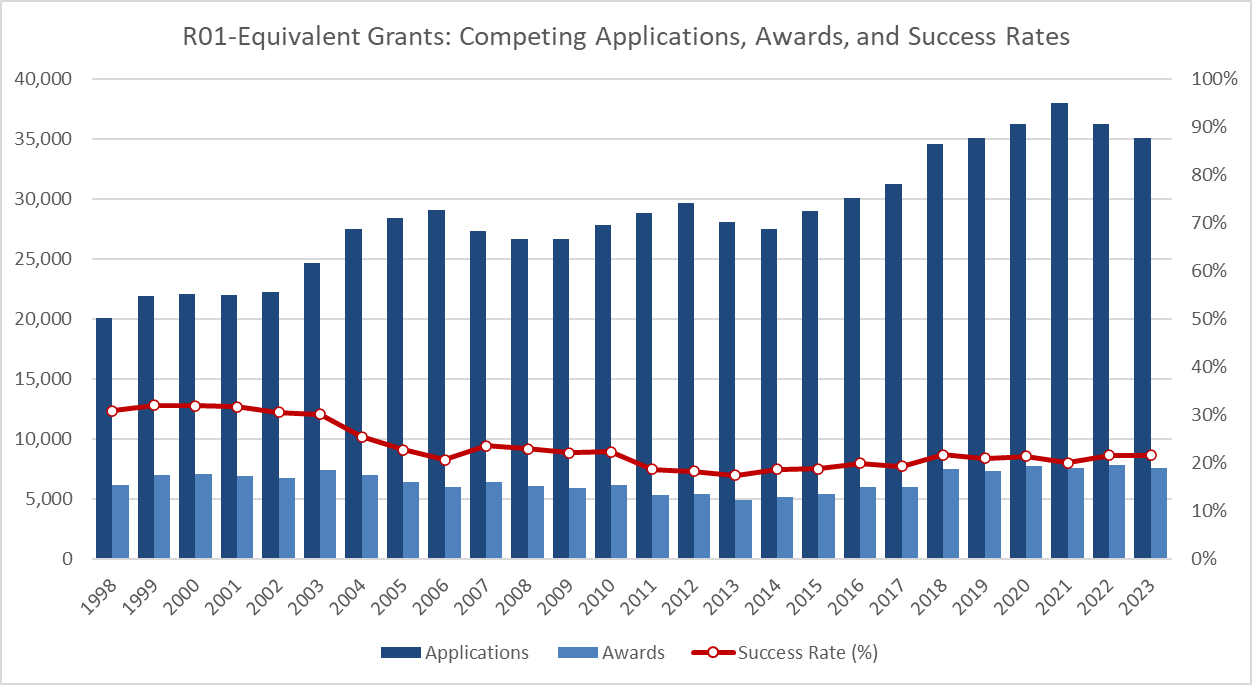
What’s at stake: The partnership between the NIH and our research universities is essential to developing new drugs and diagnostic tools fundamental to Americans’ health as well as our global competitiveness.
NIH research is vital to sustaining our extraordinary progress in human health over the past several decades. NIH funding also spurs economic growth, both by supporting jobs in research and by generating biomedical innovations that lead to growth in the biotechnology sector.
NIH research is an economic engine.In FY24, the $36.94 billion awarded to researchers in the 50 U.S. states and the District of Columbia supported 407,782 jobs and $94.58 billion in new economic activity nationwide. Most recently, America’s investments in NIH research yielded extraordinary advances in responding to COVID-19. Strong platforms and a skilled workforce jumpstarted COVID-19 diagnostics, vaccines, and treatments.
There is still significant work needed to address leading causes of death and disability in the United States.
For example:
-
More than 2 million new cancer cases will be diagnosed in the United States – and an estimated 611,720 Americans will lose their lives to cancer – this year. Over the same period, cancer will cost the United States more than $281 billion in direct medical costs.
-
Deaths from Alzheimer’s disease increased 145% from 2000 to 2019. In 2024, Alzheimer’s and other dementias cost the country an estimated $355 billion in direct medical costs and more than $339 billion in unpaid dementia caregiving.
-
Two million Americans have Type 1 diabetes, including about 304,000 children and adolescents. Approximately 1.2 million Americans are diagnosed with a form of diabetes every year. The estimated total cost in 2025 for direct medical care for diagnosed diabetes in the United States Is more than $310 billion.
Key Facts:
-
NIH funds scientists working across the country and the world. Each year, NIH awards more than 60,000 research and training grants. These funds help support approximately 300,000 researchers at more than 2,500 universities and organizations.
-
NIH supported 58,951 competitive and non-competitive awards in FY 2023. This was an additional 583 extramural grants compared to 58,368 in FY 2022, a 1.0% increase.
-
Any reductions in the reimbursement of universities’ research costs (F&A) will reduce the number of available clinical trials, shrink translational research, and constrain the current and future scientific workforce that keeps America healthy and our economy competitive.
-
In FY24, NIH awarded 64,359 grants and contracts throughout the United States to over 2730 academic universities, hospitals, small businesses, and other organizations throughout the U.S. and internationally